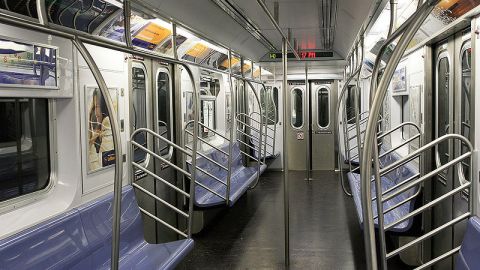Metros Should Not Have First-Class Sections

I am no apologist for the New York City subway. One of the reasons I bought a bike is to avoid its cramped cars, its smelly stations, and its under-repair delays. But at least when you step foot on our subway, there is no division of the classes. Everyone is more or less on equal footing and privy to the same illogical whims of this egalitarian form of transport.
Not so in Dubai. Its new $7.6 billion metro boasts a VIP section for customers who can pay extra to avoid having to intermingle with the lowlier masses.
The metro is a welcome improvement over the rickety shared taxis and barely serviceable vans that clog the city’s streets and will help make commutes shorter for many of the city’s less fortunate inhabitants. I appreciate its sleek design and bullet-train look. It’s also affordable, at 50 cents per ride. And I like that it is hooked up to wireless, something other metros should adopt.
But like everything else in Dubai, it seeks to sow ever-deeper divisions between the haves and the have-nots of society by creating a “gold class” section in the front of each train. This will ensure that Dubai will remain the annoying Meatpacking District of the world—a previously abandoned area that has seen a surge in hyper-development, SUV traffic, and over-the-top architecture, a place loved by nouveau rich businessmen but loathed by most sensible folks (perhaps not coincidentally both have been knocked off their pedestals in recent years).
When Boris Yeltsin wanted to come off as a common guy, a populist appeal for votes, he rode the metro to work. Ditto Mike Bloomberg one decade later. With VIP areas crowding out the rest of the world’s common spaces—ballparks, bars, and the like—the metro is the one place where everyone should have to rub shoulders, no matter their status or income level. It should stay that way, even in the showiest of places like Dubai.




